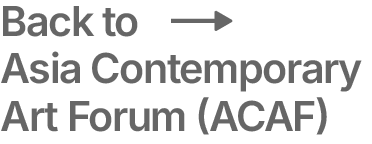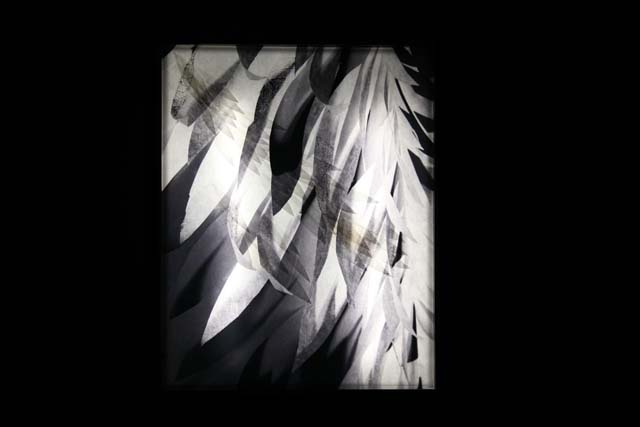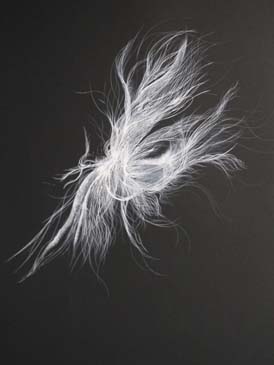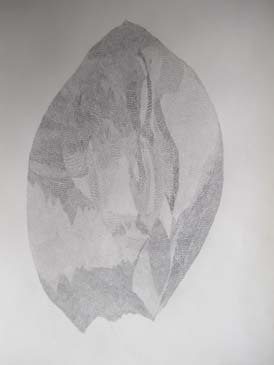Interview with Amina Ahmed
…In a conversation I had with my dear friend Allison.
1. How did you start making art?
My art has become such an organic part of me that I don’t know exactly how, when, or where it started. I do know that many people have inspired me throughout my life. The list is long, so I will just write about a few of them.
The first was Bapa, my father. He loved to take long walks especially in the rain; he often asked if I would like to join him and I always said, “yes, please”! He taught me to listen to the sound of the rain and told me that raindrops were round; we looked at the circles that formed when the rain hit puddles. I loved the sound of his voice and still love to walk in the rain, and have always practiced listening. He said everything had its own sound, even the trees and their roots. I learned to tell the difference between the beginning and end of a season by listening to the sound.
Then there are the women in my life. My co-mother, Noor Jahan, my birth mother, Ma, and my eldest sister. All three are very feminine and powerful women, each with their own interpretation of that femininity. Bapa and Noor Jahan could not have children; after fifteen years of marriage, she asked him to take another wife, my mother. The two women became pregnant with their first child at the same time. My Ma was a blessing!
These women had an immaculate, carefully ordered home and garden in London. They always had daily rituals and filled our homes with beautiful textiles. If you have ever experienced being in a home where women come together as a community to make sweets or pickles, or where you took part in the preparation of the healing foods for someone who had just given birth, you would understand the profound impact of these rituals.
The foods, the garments, all the embroideries were measured and made into patterns; diamonds, triangles, circles, squares, and rows and rows of trays containing different delicacies. Alas, for my own children, all the delicacies are store bought now. But it still looks wonderful to me.
My mother made our clothes and cut her own patterns out of newspaper. She can make anything we show her. My sister who collects saris, on the other hand, makes everything without a pattern and can finish it in a couple of hours, ready to wear. Noor Jahan had exquisite taste in textiles and came up with the most unusual colour combinations. My sister says that every time they traveled, she would bring back the most beautiful lace and brocade and all in the best silks. She taught us about sheer and opaque material and to appreciate fine craftsmanship and beauty.
Our day was always broken up by the rhythm of prayers. Our home was, and still is, filled with gatherings of all kinds of poetry, music and song, and more often, of recitation and prayers until dawn.
One Ramadan, when the angels changed their early morning shift, my father had a heart attack. I was with him. Ma and my sister were in India attending my cousin’s wedding. When Ma returned, she asked for her husband. Three months later NoorJahan passed away. I was twelve.
In middle school, I was the student who spent all her lunch times and break times in the art room. My art teachers, Mr Erser and Ms Jones, were my friends and they let me stay as long as I wanted.
Ma spent many hours in the garden tending to her roses and herbs…this was the morning view from my bedroom window. I was about fourteen and it was in this space that I made my first installation. We had a couple of aunties who always brought us silk or plastic flowers and we collected a good number of them over the years. One winter on a misty Turnner-esque morning I looked outside and decided to plant them all! The view from my window changed dramatically, and dramatically changed my view.
My friend Simone told me about Saturday morning life drawing classes. Later, Simone told me about art school and the need for a portfolio. It was my younger sister, my muse, that suggested I make one of those ‘portfolio’ things. And years later, it was my sister who actually put together the ‘portfolio thing’ for my college application when I, grief stricken by my brother’s death, could not.
Sermon to the Birds, St. Francis of Assisi., “Language of the birds” Series, Site specific Installation, 2011
2. Briefly describe your art from the perspective of what it could tell us about you?
In my art I access the patterns, the rhythms, and the pulse of life that I believe permeates all living things. The rhythms have been with me since my childhood; they have followed me through all my relationships and my traditional culture. I can see the connections across all these elements, just as I can see and feel the connections across all art forms. The pulse moves far beyond the personal and manifests itself in the music of the universe.
I cherish the solitude of my art making process and I hope to convey that quietness in my works.
3. What experiences have most influenced your choice of subject matter, medium and style?
Growing up in the West, having Western teachers, combined with my own background and traditions, enriches my perspective and understanding of the universal order of nature as art.
When I was nineteen my friends Antoinette and Hamid gave me the gift of a book that has stayed with me: “Mantiq at-Tayr”, by Farid ud-Din Attar.
I am inspired by primordial art and by many Artists. Poets and musicians where one can travel with the sounds of certain kinds of music especially such as that of the composer Jamshied Sharifi, the painter Giotto and the architect Hassan Fathy and the contemporary artist Zanina. I am inspired by the migration of symbols across all art forms.
My marriage to an obsessive lover of numbers and poetry; this love has transferred into my own art. He sees geometry as numbers and I see geometry as numbers in space. We have had many conversations about our differing visions; this dialogue between us, and the ones with my close friends has been invaluable.
I treasure the depth, the importance, and the immensely positive influence of my relationship of many years with my friend, an artist and a grandmother of seven children, Parveenjan.
The memory and experience that I gained through my journeys to Fez, Cairo, and Iran have also deeply impacted my life.
Language of the Birds” #1, Mixed Media Lightbox, 16″X20″ 4″Depth, 2010
4. Is your formal or informal training as an artist useful? How?
What is formal and what is informal? Can one really be more useful than the other when both are intertwined and interdependent?
My informal training is my life, my family and the traditions I grew up with; they infused everything.
My formal training reinforced my inheritance, and I am indebted to my professors Keith Critchlow, Paul Marchant, David Cranswick and Khaled Azzam, and all those who taught me the significance of symbolism.
The glorious writings of Martin Lings, Sayyed Hossein Nasr, Laleh Bakhtiar, Annemarie Schimmel, and Sachiko Murata helped me re-member and find what I was still looking for, but this time from a Western perspective.
Art school helped me to understand the tools at my disposal. But how could I paint without knowing about eggs, chemistry, cooking, or colour? This is where the boundaries between formal and informal training blur.
Would I have understood geometry without my teachers at art school? Then again, would I have felt its rhythm without my father’s walks, the rituals, or my mother making perfectly round rotis and thoughtfully measured plates of halva and burfi?
5. Does your work reflect issues in yourself, in society or in your community? What would you say is the purpose for making art?
The purpose of my art is a means of understanding. It is part of my belief system, my grip on reality, the constant in my life. It is not separate from my religion, my background, or my family. It encompasses them all. It is my soul-searching, my reconnection to the origin. It is my music. It is difficult to stop living it, but sometimes it is difficult to stop living enough to let it happen.
My heart Is on Fire with the look of the holder of my heart, “Language of the bird” series, Gum tempera on Paper, 30” x 22”, 2010
6. Do you appreciate culturally specific works of art? If so how does your personal and cultural background show up in your work?
Is there anything other than culturally specific art? The common threads and themes given to us in nature, pattern, shape and colour merely take on the time, place and culture in which they happen to exist. You cannot make art and pretend your cultural background does not influence you. All art carries a culturally specific element, an underlying thread, a connection to the past, present and future. The time and space in which it exists makes it unique, gives it excitement and the connection to everything else in its contextual space. My art is no exception.
I would like to say musicians have it easier than visual artists, but that may just be because I am jealous of them! Maybe their work is just more accessible, or maybe we are trained to listen, more than to see. We hear the heartbeat before we are born. Seeing takes maturity, light and birth.
7. Is there anything you would like to say about your local art scene or the international art market, art education or system for art exhibition?
The system seems to work in Canada better than here in the USA: Artists’ needs’, and all that. I am interested in the conversations that are going on globally. Looked at through the lens of the Internet local and international art scenesmarkets merge.
I like the local art scene around my studio mates in particular; it’s a supportive community with fellow artists who understand the struggles of art making.
Art education could be great if you can afford it and if you find the course best suited for you. In my opinion, every artist ought to curate or take part in the process of putting together an exhibition. It would be great if there were a crash course before leaving college teaching students how not to pack their work and what not to sweat about.
Some artists really don’t need a formal education and we especially need those artists.
With every breath, “Language of the Birds” series, Medium Graphite on paper, 36’x76″, 2009-2011
8. How does your current portfolio fit into the rest of your body of work?
My current work is an extension of my body of work, my journey, my life’s rhythm. Repetition, both intended and inadvertent, is inherent in my work.
Presently, I am using pins and dressmaking paper, repeating things my mother taught me, though I didn’t realize that until the piece was complete.
The marks that I’ve used in the past have been constant; they leave traces and resurface. Geometry is the underlying basis of my work, sometimes as hidden marks, though in the earlier works it was mostly revealed. The resonance of geometry, repetition and rhythm keeps me grounded and gives me a frame of reference. I tend to go back and forth, revisiting works I started long ago and looking at them from other angles.
The use of technology and new media is a departure from my training in the traditional arts. What I am interested in is putting across the symbolic idea; material and media change but the idea doesn’t. I enjoyed using sound and the process of making lightboxes; I found that I used it in the same way as gesso; working in multiple layers where the light is comes from beneath the layers of the chalk ground.
“The Language of the Birds”, explores the theme of the inward journey, referencing “Mantiq at-Tayr”, translated as “The Logic of the Birds”, a story by the twelfth-century Persian poet Farid ud-Din Attar of Naishapur. In what has been a core project for many years, I explore the theme of a journey toward the Divine with the use of a single shape as an archetype, repeated to evoke the sense of remembrance or invocation, and used in multiple layers to symbolize the veil. The shapes are often used until exhausted only to come to the realization that the journey has only just begun. I use sound in the same way—calling the way one calls to one’s mother or father over and over again until one sees the beloved face. “My heart is on fire with the look of the holder of my heart.”






